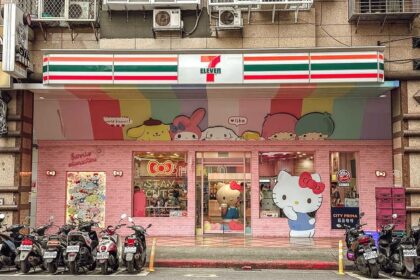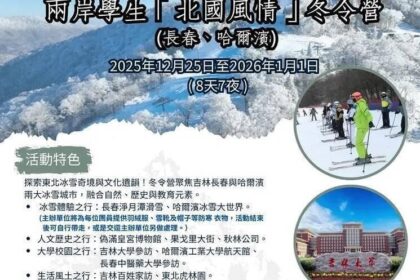Inside Oizumi’s factory town shift
In Oizumi, a compact manufacturing town in Gunma Prefecture, the factory whistle still blows on time, but the voices on the shop floor have changed. Employers say the cost of hiring foreign staff rises each year, yet production still leans on them because local applicants are scarce. Companies that once drew from nearby high schools and job fairs now report that few Japanese candidates apply for tough, dirty and dangerous roles on assembly lines or in logistics. Foreign workers from the Philippines, Vietnam and Brazil, along with people from Myanmar, Indonesia and China, now fill critical shifts. Managers say they value reliability and a willingness to stay late when orders spike. Without that flexibility, small and mid sized firms would miss delivery dates and risk losing clients.
- Inside Oizumi’s factory town shift
- Rising costs, fewer local applicants
- Factories rely on foreign hands to keep lines running
- Care work shows how tight the market is
- Why workers move between regions and sectors
- Integration in daily life, and debates about pace of change
- Policy choices shaping the workforce
- What to Know
Why has Oizumi become a magnet for foreign labor?
Oizumi built its reputation as a factory town in the late twentieth century and gained an early influx of Brazilian residents after a 1990 immigration rule change allowed people of Japanese descent to work in Japan. Communities formed around auto parts, electronics and food processing plants. Shops began stocking Brazilian food, schools added language support and municipal offices opened desks in Portuguese. The result is a town that is used to hiring from beyond Japan and that has social networks able to welcome newcomers quickly.
At the same time, Japan’s population is shrinking and aging. Businesses everywhere report difficulty filling shifts, and Oizumi is no exception. Government counts show foreign workers topped the two million mark and have kept growing at a double digit pace in recent years, while foreign residents climbed to well over three million nationwide. That macro trend shows up on Oizumi’s streets, where about one in five residents is non Japanese and factories often recruit across borders to keep lines running.
Rising costs, fewer local applicants
Ask local managers what has changed beside the faces on the line, and many point to cost. It is more expensive to recruit, train and retain staff from abroad. Housing support, transportation allowances, language classes and agency fees add up. Wages have also been rising, with the national average hourly minimum passing the 1000 yen mark and prefectural rates climbing toward that level or beyond. Even so, firms say they have little choice. The pool of Japanese applicants is small, especially for physically demanding work.
Tomoaki Yuzawa, president of the equipment maker Yuzawa AI, described a shift he did not plan. His company once hired mostly Japanese workers. Today, about two thirds of his employees are foreigners, many of them technical trainees from the Philippines and Vietnam.
We did not set out to hire more foreigners. We had to. Orders surge, machines cannot sit idle, and we need people who show up and accept overtime when it is crunch time.
Cost pressure and preferences about work hours are part of the story. Many younger Japanese workers prioritize work life balance and are more likely to decline late shifts. Work style reforms over the past few years have also put legal caps on overtime in many sectors and forced managers to plan more carefully. Employers in Oizumi say foreign staff often request extra hours to boost income, especially when there is a clear premium for night work or weekends. That difference in willingness to work late, combined with thin local applicant pools, is driving the reliance on foreign labor even as per person costs rise.
Factories rely on foreign hands to keep lines running
Manufacturing remains the single biggest destination for foreign workers in Japan, employing hundreds of thousands across auto parts, food processing and electronics. In plants around Oizumi, they operate molding machines, assemble components, prepare shipments and cover peak demand. Managers explain that the work can be demanding and sometimes messy, so foreign staff who stay through training and build skills quickly become invaluable. When a batch needs to ship at midnight or a customer moves up a deadline, they are often the ones who agree to extend hours.
One local manufacturer with roughly two hundred employees said Japanese staff have become less open to overtime, leaving foreign colleagues to handle most extra shifts. The firm hires across nationalities not to save on wages, the manager said, but because those workers say yes when the factory needs them. That pattern, repeated across multiple plants, is a key reason Oizumi can still meet production schedules despite a tight labor market.
Care work shows how tight the market is
The squeeze is not confined to factory floors. Care facilities are under even more pressure, and Oizumi’s nursing homes illustrate why. At one local facility, Ainohana, eleven of thirty five care staff are foreigners. Residents see familiar faces from abroad pushing wheelchairs, serving meals and chatting in Japanese learned on the job. The deputy chief manager says the home began hiring more foreign staff a few years ago when Japanese applicants stopped coming in enough numbers to cover basic needs.
Daisuke Kima, the deputy chief facility manager at Ainohana, put it plainly.
There is a real shortage of care workers. Foreign colleagues are a great help, and we pay the same wages as we do Japanese staff.
Caregiving requires conversation and trust, and language fluency matters. Some elderly residents have trouble understanding accents or fast speech, and foreign staff can struggle with paperwork and medical terminology. Mixed teams help each other, with Japanese caregivers often covering administrative tasks while foreign colleagues focus on direct care. Even with those challenges, the sector’s tightness stands out. The ratio of job openings to applicants in caregiving is near four to one, well above the figure for all occupations. That gap leaves facilities little choice but to broaden recruitment and invest in language training on site.
Why workers move between regions and sectors
Demand is so strong that recruiters in Oizumi field calls from far away. A staffing firm recently received a request from Aomori Prefecture for short term apple transport work at high wages. Only one Japanese applicant responded, while foreign residents were ready to travel for the pay and overtime. That snapshot captures a wider reality. Many industries from farms to warehouses now compete for a limited pool of willing hands. Employers who can offer housing, transportation and the chance for steady overtime have an edge.
Visa rules also shape choices. Many Oizumi workers arrive first on the technical intern program, which is meant to transfer skills but often functions as an entry route into factory jobs. Others move into the Specified Skilled Worker status, a newer framework for sectors with labor shortages that allows more job mobility and, in some cases, a longer stay. Greater mobility lets workers chase better conditions or higher pay in other prefectures. It also raises retention challenges for employers who invest in training. Some managers sweeten the deal with guaranteed shift premiums, language classes and help for families. The weak yen has been another factor, pulling in workers because earnings go further when sent home, even as living costs in Japan rise.
Integration in daily life, and debates about pace of change
Walk around Oizumi and you see how daily life has adapted. Supermarkets carry Brazilian cuts of meat and Southeast Asian spices. Restaurants post menus in Japanese and Portuguese. Town offices and schools offer language classes, cultural orientation and consultation desks that help residents with housing, health insurance and taxes. Signs in multiple languages guide people to clinics, day care centers and libraries. These practical steps make it easier for newcomers to settle and for employers to recruit.
Local officials have treated integration as essential municipal work. Language support in classrooms helps children keep up and reduces dropouts. Community events bring longtime residents and newcomers together. Police and town hall staff meet with factory managers and neighborhood associations to head off misunderstandings about noise, waste disposal and traffic. Over time, these small routines build trust and make Oizumi more resilient even as its population ages.
There are disagreements about how fast to move and how large the foreign presence should be. Some voices warn that introducing a shared administrative language other than Japanese could sow confusion among older residents. Others worry about who pays for welfare when foreign residents lose jobs or grow old. Many local leaders counter that without foreign workers, factories would close and shops would shutter, shrinking the tax base and services for everyone. The reality in Oizumi is that foreign residents are part of how the town functions day to day, and most conflicts are addressed through practical fixes rather than sweeping policies.
Policy choices shaping the workforce
National policy has opened more doors in response to the labor crunch. A major change in immigration rules created a path for manual workers in fourteen sectors with chronic shortages, including caregiving, construction, food services and agriculture. Government estimates put potential arrivals in the hundreds of thousands over several years, with caregiving expected to accept the largest share. That policy shift is one reason the number of foreign workers has reached new highs. Government figures show a steady climb above two million foreign workers, and foreign residents have surged past three million, reshaping communities far beyond the big cities.
Debate in Tokyo focuses on how to balance growth with social stability. Ministries are weighing how to refine visa categories, how to support language learning and how to spread workers more evenly across regions. Some politicians suggest caps or regional quotas. Local governments that rely on foreign labor warn that sharp limits would worsen shortages just as their elderly populations grow. In the middle are employers who need predictable rules, and workers who want fair treatment and the chance to advance. Clarity on rights, easier access to language training and consistent enforcement of labor standards would help both sides and reduce churn.
What to Know
- Oizumi in Gunma has become dependent on foreign workers as local applicants for factory and care jobs decline.
- Managers say costs per hire are rising because of higher wages, housing support, language training and agency fees.
- Foreign staff often accept overtime, helping small and mid sized firms meet urgent orders when demand spikes.
- Manufacturing employs a large share of foreign workers, who keep assembly lines, logistics and food processing running.
- Care facilities face even tighter labor markets, with foreign caregivers now essential in homes like Ainohana in Oizumi.
- The ratio of caregiving job openings to applicants is about four to one, far above the average for all jobs.
- Strong demand pulls workers across prefectures, as seen in seasonal recruitment for apple transport in Aomori.
- Visa pathways such as the Specified Skilled Worker status increase mobility, raising both opportunities and retention challenges.
- Oizumi supports integration with language classes, multilingual services and community events that reduce friction.
- National policy continues to evolve as Japan seeks to fill shortages while maintaining fair treatment and community stability.












